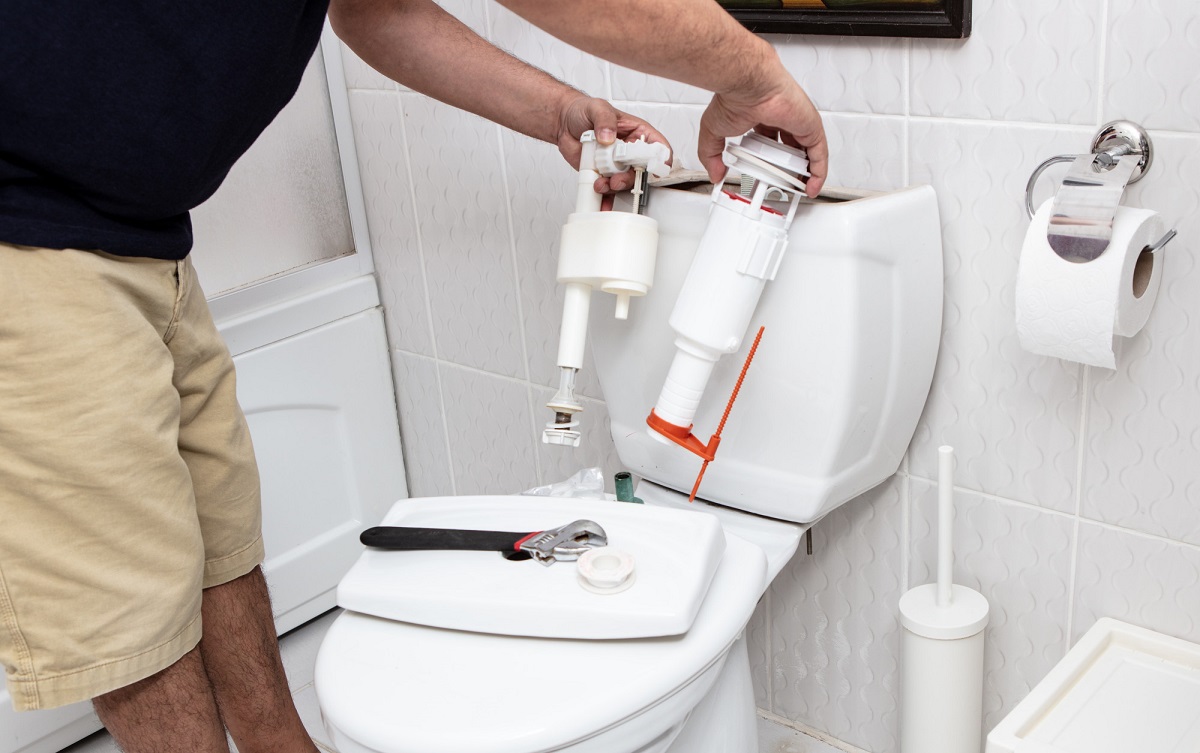

Articles
How To Fix My Toilet
Modified: January 6, 2024
Learn effective strategies and expert tips on fixing your toilet with our comprehensive articles. Say goodbye to plumbing issues and hello to a fully functional bathroom.
(Many of the links in this article redirect to a specific reviewed product. Your purchase of these products through affiliate links helps to generate commission for Storables.com, at no extra cost. Learn more)
Introduction
A malfunctioning toilet can be a major inconvenience and a source of frustration. From clogs to leaks and flushing problems, there are various issues that can arise with a toilet. While some problems may require the assistance of a professional plumber, many common toilet issues can be fixed with a few simple steps, tools, and materials.
In this article, we will guide you through the process of fixing common toilet problems. Whether you’re dealing with a clogged toilet, a leaky tank, or a flushing mechanism that isn’t working properly, we’ll provide you with step-by-step instructions to help you resolve the issue and get your toilet back to optimal functioning.
Before we dive into the specific troubleshooting steps, let’s take a look at some of the essential tools and materials you will need:
- Plunger
- Toilet auger
- Adjustable wrench
- Screwdriver
- Plumber’s tape
- Replacement parts (such as flapper, fill valve, or flush valve)
With these tools and materials on hand, you’ll be ready to tackle most toilet repairs. So without further ado, let’s get started on fixing your toilet!
Key Takeaways:
- Don’t let a malfunctioning toilet ruin your day! With the right tools and know-how, you can tackle common issues like clogs, leaks, and flushing problems on your own, saving time and money.
- Remember to exercise caution, turn off the water supply, and test the functionality of your toilet after each repair step. If in doubt, don’t hesitate to seek the expertise of a professional plumber for more complex issues.
Read more: How To Fix My Toilet Paper Holder
Tools and Materials Needed
Before you begin troubleshooting your toilet, it’s important to gather the necessary tools and materials. Here are the essential items you’ll need:
1. Plunger
A plunger is a basic tool that can help you clear a clogged toilet. Make sure to choose a toilet plunger that has a flange, which is the rubber extension at the bottom. This will create a better seal and enhance the plunging effectiveness.
2. Toilet Auger
If the plunger fails to clear the clog, a toilet auger (also known as a closet auger) can be used to remove the blockage. This long, flexible tool is designed specifically for breaking through and retrieving objects that are causing the toilet to be clogged.
3. Adjustable Wrench
An adjustable wrench is a versatile tool that can be used to tighten or loosen bolts and nuts on various toilet components. It’s essential for tasks like replacing a fill valve or flush valve.
Read more: How To Fix A Toilet Bowl
4. Screwdriver
A screwdriver is necessary for removing and tightening screws on the toilet’s tank lid, as well as for disassembling and reassembling certain toilet parts.
5. Plumber’s Tape
Plumber’s tape, also known as Teflon tape, is a thin, white tape used to seal threaded connections. It can help prevent leaks when installing or repairing components like the fill valve or flush valve.
6. Replacement Parts
Depending on the specific issue you’re facing, you may need to replace certain components of your toilet. Common replacement parts include the flapper (which controls the flush), the fill valve (which refills the tank with water), and the flush valve (which regulates the water flow during flushing).
By having these tools and materials ready, you’ll be well-equipped to tackle most toilet repairs. Now that you’re prepared, let’s move on to the troubleshooting steps to fix your toilet!
Step 1: Identifying the Issue
Before you can effectively fix your toilet, it’s important to identify the specific issue you’re facing. This will help determine the appropriate course of action. Here are some common toilet problems and their signs:
Read more: How To Fix A Toilet Handle
1. Clogged Toilet
If your toilet is not flushing properly and water is backing up, it’s likely that you have a clog. Signs of a clogged toilet include slow drainage, gurgling sounds, or water rising to the brim when flushed.
2. Leaky Toilet
A leaky toilet can be indicated by water pooling around the base of the toilet or a continuous, small flow of water into the bowl. A leaky toilet can waste a significant amount of water and should be addressed promptly.
3. Flushing Problems
If your toilet is not flushing at all or is only flushing partially, you may have an issue with the flushing mechanism. Signs of flushing problems include weak or incomplete flushes, the handle being loose or not springing back, or the flush not activating at all.
4. Broken Toilet Component
If you notice visible cracks or damage to a specific toilet component, such as the tank, bowl, or seat, it may need to be replaced. Look for signs of wear and tear or any obvious signs of malfunctioning.
By identifying the specific issue, you’ll be able to focus on the correct troubleshooting steps to fix your toilet. In the following sections, we’ll provide step-by-step instructions for common toilet repairs. Remember to turn off the water supply before you proceed with any repairs.
Read more: How To Fix A Running Toilet
Step 2: Shutting off the Water Supply
Before you begin any repair work on your toilet, it’s crucial to shut off the water supply to prevent any potential flooding or water damage. Here’s how to do it:
1. Locate the Water Shut-off Valve
The water shut-off valve is typically located near the base of the toilet, either on the wall behind it or on the floor. It is usually a small, oval-shaped valve with a handle or lever.
2. Turn Off the Water Supply
To shut off the water supply, rotate the handle or lever clockwise (to the right) until it is fully closed. This will stop the flow of water to the toilet.
3. Test the Water Supply
After shutting off the valve, flush the toilet to ensure that the water flow has stopped. If water continues to flow or the toilet refills, you may need to locate the main shut-off valve for your home’s water supply and turn it off instead.
By shutting off the water supply, you’ll prevent any potential water damage and make it safe to proceed with the repair work. Now that the water supply is turned off, we can move on to the next steps based on the specific issue you’re facing with your toilet.
Read more: How To Fix A Toilet Flange
Step 3: Clearing a Clog
A clogged toilet can be a frustrating problem, but it can often be resolved without the need for a plumber. Here are the steps to effectively clear a clog:
1. Grab Your Plunger
Begin by grabbing your plunger and placing the rubber end over the toilet drain at the bottom of the bowl. Ensure that the plunger creates a tight seal.
2. Apply Pressure
Using a firm grip, rapidly and forcefully push the plunger up and down several times. This motion creates pressure and suction, which can dislodge the clog.
3. Test the Drainage
After plunging, flush the toilet to see if the clog has been cleared. If the water drains away properly, the clog has likely been resolved. If not, repeat the plunging process a few more times.
Read more: How To Fix Wobbly Toilet
4. Use a Toilet Auger
If the plunger is unsuccessful in clearing the clog, it’s time to try a toilet auger. Insert the auger into the toilet bowl, and slowly crank the handle while exerting gentle pressure. The auger’s flexible cable will help break up and remove the blockage.
5. Flush and Clean
Once the clog has been cleared, flush the toilet a few times to ensure proper drainage. You may also want to clean the toilet bowl with a toilet brush and disinfectant to remove any residue.
If you’re still unable to clear the clog after attempting these steps, it may be time to call a professional plumber for further assistance.
Now that you’ve successfully cleared the clog, you can move on to the next steps if your toilet is experiencing other issues, such as leaks or flushing problems.
Step 4: Fixing a Leaky Toilet
A leaky toilet can waste water and potentially lead to water damage if left untreated. Here’s a step-by-step guide to fixing a leaky toilet:
1. Identify the Source of the Leak
First, determine the source of the leak. It could be coming from the base of the toilet, the tank, or the supply line. Inspect the area around the toilet for any signs of water pooling, as this can help pinpoint the location of the leak.
Read more: How To Fix An Overflowing Toilet
2. Fix a Leaky Base
If the leak is coming from the base of the toilet, it’s likely that the wax ring, which creates a watertight seal, needs to be replaced. To do this, you’ll need to remove the toilet, replace the wax ring, and reinstall the toilet. This is a more advanced repair, so it may be best to consult a plumber if you’re uncomfortable with this process.
3. Repair a Leaky Tank
If the leak is coming from the tank, it may be due to a faulty flush valve, fill valve, or flapper. Check for any cracks or damage to these components and replace them if necessary. Follow the manufacturer’s instructions for proper installation. Additionally, ensure that the bolts connecting the tank to the bowl are tightened securely to prevent leaks.
4. Replace a Leaky Supply Line
If the leak is originating from the supply line, it may be due to a loose or damaged connection. Turn off the water supply, disconnect the supply line, and inspect it for any cracks or damage. Replace it if needed, and ensure that the connection is tight when reattaching the supply line.
5. Test for Leaks
After making the necessary repairs, turn on the water supply and let the tank fill up. Check for any leaks around the base, tank, and supply line. If you notice any leaks, tighten the connections or reevaluate the repair work.
By following these steps, you can successfully fix a leaky toilet and prevent further water wastage or damage. If you’re unsure about performing these repairs, it’s always a good idea to consult a professional plumber for assistance.
Now that you’ve resolved the leak, let’s move on to addressing flushing problems in the next step.
Read more: Who Can Fix My Water Heater
Step 5: Repairing a Flushing Problem
If your toilet is experiencing flushing problems, such as weak flushes or the handle not activating the flush, it’s important to address the issue promptly. Here’s a step-by-step guide to repairing a flushing problem:
1. Check the Flush Handle
Start by inspecting the flush handle and ensure that it is securely attached to the toilet tank. If it’s loose or not springing back properly, it may need to be tightened, adjusted, or replaced. Remove the tank lid and examine the chain or lever connected to the flush handle. Adjust it as necessary for optimal operation.
2. Adjust the Water Level
If the toilet isn’t flushing fully or has a weak flush, it may be due to an incorrect water level in the tank. Adjust the water level by adjusting the float ball or float cup mechanism. Make sure the water level is approximately one inch below the overflow tube inside the tank.
3. Clean or Replace the Flapper
The flapper is responsible for controlling the water release during a flush. If it’s worn out, it can cause problems with flushing. Inspect the flapper for any cracks, mineral buildup, or damage. Clean it if necessary or replace it if it’s worn out. Follow the manufacturer’s instructions to install the new flapper correctly.
Read more: How To Fix My Kegerator
4. Check the Flush Valve
If the above steps haven’t resolved the flushing problem, the issue may lie with the flush valve. Inspect the flush valve for any debris or mineral buildup that may be obstructing the water flow. Clean the flush valve thoroughly using a brush or cloth. If cleaning doesn’t solve the issue, you may need to replace the flush valve entirely.
5. Test the Flush
After making any adjustments or repairs to the flushing mechanism, test the flush to ensure it’s working properly. Ensure that the flush is strong and complete, with all waste being effectively flushed away. Make any necessary refinements or repairs if the problem persists.
By following these steps, you can successfully address flushing problems and restore proper functionality to your toilet. If you’re unsure about performing these repairs yourself, consider consulting a professional plumber for assistance.
Now that you’ve resolved the flushing issue, let’s move on to the next step: replacing a broken toilet component.
Step 6: Replacing a Broken Toilet Component
If you have identified a specific broken component in your toilet, such as the fill valve, flush valve, or flapper, it’s important to replace it to restore proper functionality. Here’s a step-by-step guide to help you replace a broken toilet component:
1. Turn Off the Water Supply
Before starting any replacement work, shut off the water supply to the toilet by turning the shut-off valve clockwise until it is fully closed. Flush the toilet to drain any remaining water from the tank.
Read more: How To Fix Toilet Seat Hinge
2. Remove the Broken Component
To remove the broken component, follow the specific instructions for that component provided by the manufacturer. Usually, it involves disconnecting and unscrewing the necessary connections to remove the old part.
3. Install the New Component
With the old component removed, install the new component following the manufacturer’s instructions. This may involve tightening screws, making sure connections are secure, and adjusting any necessary settings or adjustments.
4. Turn On the Water Supply
Once the new component is installed, turn on the water supply by rotating the shut-off valve counterclockwise (to the left) until it is fully open. Allow the tank to fill up and check for any leaks around the newly replaced component.
5. Test the Functionality
After turning on the water supply, test the functionality of the newly replaced component. For example, if you replaced the flapper, flush the toilet to ensure it seals and operates correctly. If you replaced the fill valve or flush valve, ensure that the tank refills properly and the flushing action is smooth and efficient.
By following these steps, you can effectively replace a broken toilet component and restore your toilet to optimal functioning. If you’re uncertain about performing these repairs, it’s advisable to consult a professional plumber for assistance.
Now that you’ve replaced the broken component, let’s move on to the final step: reassembling and testing the toilet.
Read more: How To Fix A Loose Toilet Bowl
Step 7: Reassembling and Testing the Toilet
After completing any necessary repairs or replacements, it’s time to reassemble your toilet and test its functionality. Follow these steps to properly reassemble and test your toilet:
1. Reattach the Tank to the Bowl
If you removed the tank from the bowl during the repair process, carefully align the tank with the bowl and reconnect them using the bolts and washers provided. Tighten the bolts evenly to ensure a secure fit, but avoid overtightening, as it could cause damage to the porcelain.
2. Reinstall the Toilet Seat
If you removed the toilet seat for easier access during repairs, place it back onto the toilet bowl and secure it using the provided hardware. Ensure that it is aligned properly and tightened securely.
3. Turn On the Water Supply
Turn on the water supply by rotating the shut-off valve counterclockwise (to the left) until it is fully open. Allow the tank to fill up with water. Check for any leaks around the connections or newly replaced components.
Read more: How To Fix A Toilet Seat Lid
4. Test the Flush and Functionality
Once the tank is filled with water, flush the toilet to test its functionality. Check that the flush is strong and complete, and ensure that there are no leaks or unusual sounds during or after the flush. Pay attention to the correct operation of any replaced or repaired components.
5. Clean Up and Final Check
Clean up any excess water or debris and perform a final check of the toilet’s operation and overall appearance. Make sure all connections are secure, there are no leaks, and the toilet is functioning as expected.
By following these steps, you can successfully reassemble and test your toilet after making repairs or replacements. If you encounter any issues or notice persistent problems, it may be necessary to consult a professional plumber for further assistance.
Congratulations! You have successfully completed the process of fixing your toilet and restoring it to proper working condition. Remember to perform regular maintenance and address any issues promptly to avoid further complications in the future.
Thank you for using our guide, and we hope it has been helpful in resolving your toilet problems!
Conclusion
Dealing with a malfunctioning toilet can be a frustrating experience, but with the right knowledge and tools, many common toilet problems can be resolved without the need for a professional plumber. By following the step-by-step guide we have provided, you can address issues such as clogs, leaks, flushing problems, and broken components.
Remember to always start by identifying the specific issue you are facing and gather the necessary tools and materials. From there, you can proceed with troubleshooting and making the necessary repairs or replacements.
It’s important to exercise caution during the repair process and turn off the water supply before beginning any work. Take your time, follow the manufacturer’s instructions, and test the functionality of your toilet after completing each step.
If you ever feel uncomfortable or unsure about performing the repairs yourself, don’t hesitate to reach out to a professional plumber. They have the expertise and experience to handle more complex or challenging toilet issues.
Maintaining a properly functioning toilet is crucial for the comfort and convenience of your household. Regular check-ups and proper maintenance can help prevent future problems and save you from costly repairs down the line.
We hope this comprehensive guide has been helpful in assisting you with fixing your toilet. By taking the necessary steps and using the proper tools, you can successfully resolve many common toilet issues and enjoy a fully functioning bathroom once again.
Thank you for reading this article, and we wish you success in your toilet repair journey!
Frequently Asked Questions about How To Fix My Toilet
Was this page helpful?
At Storables.com, we guarantee accurate and reliable information. Our content, validated by Expert Board Contributors, is crafted following stringent Editorial Policies. We're committed to providing you with well-researched, expert-backed insights for all your informational needs.
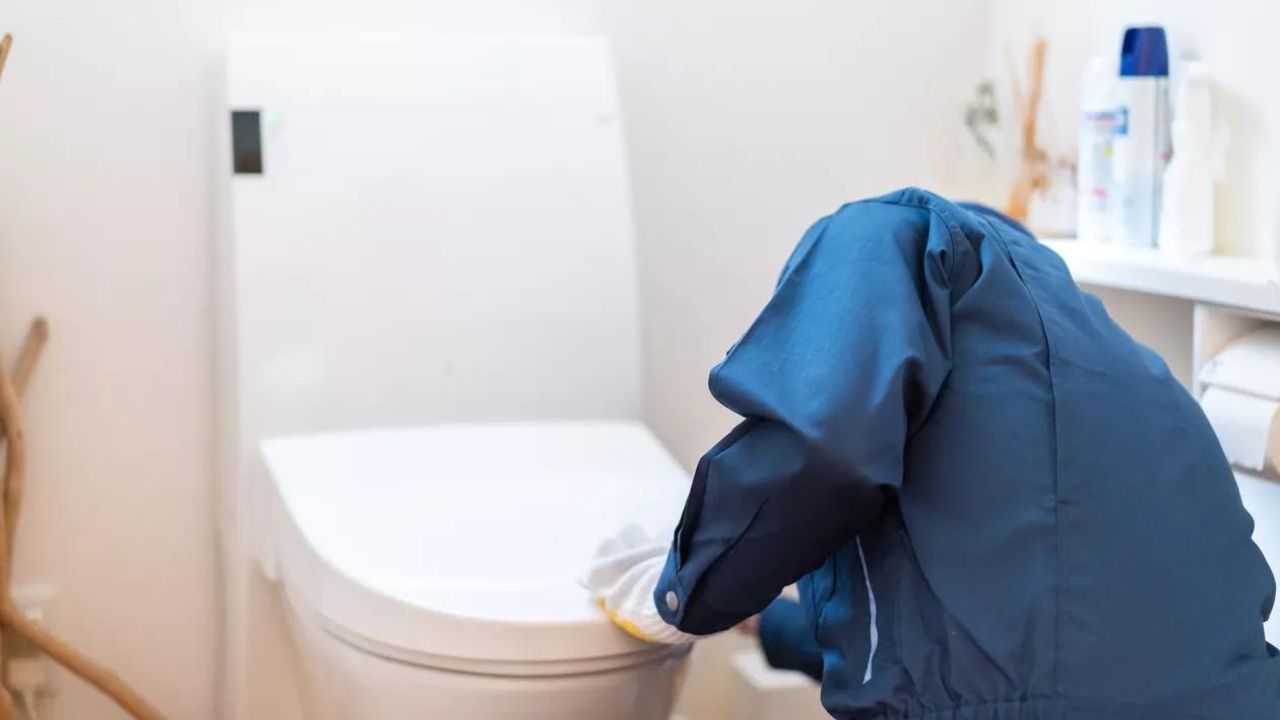
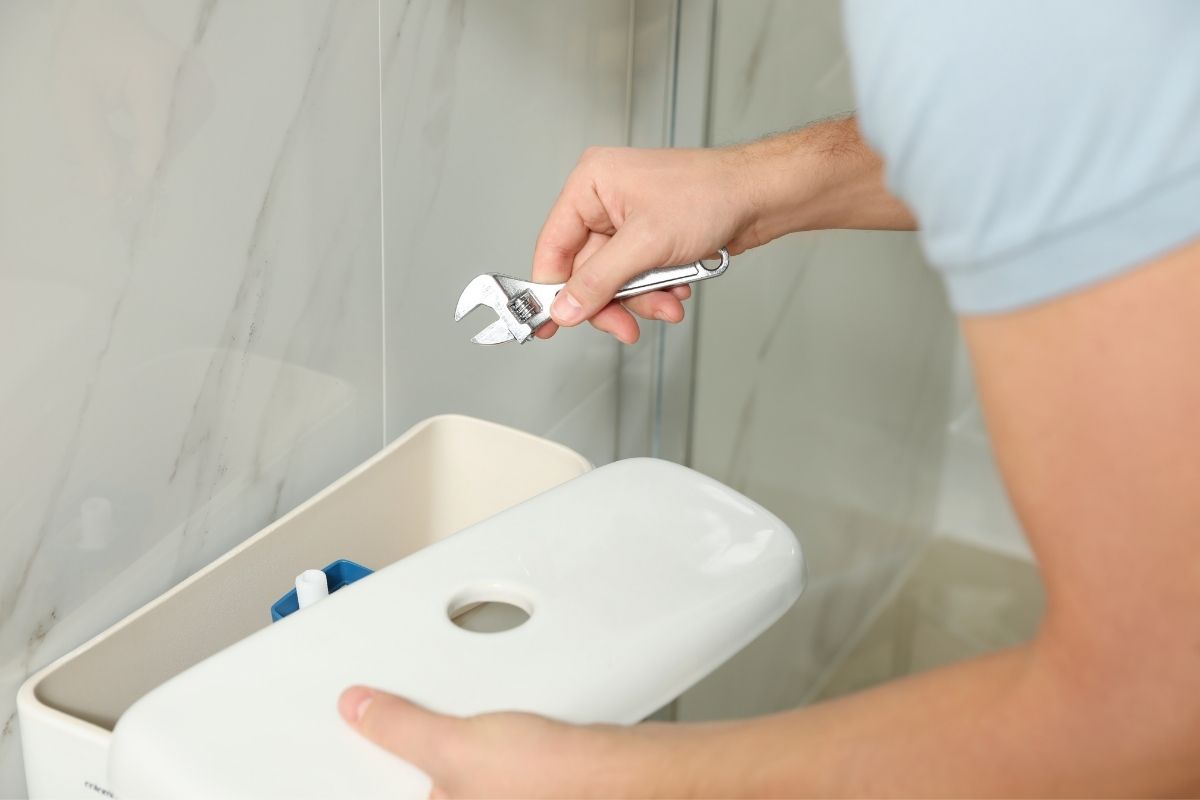
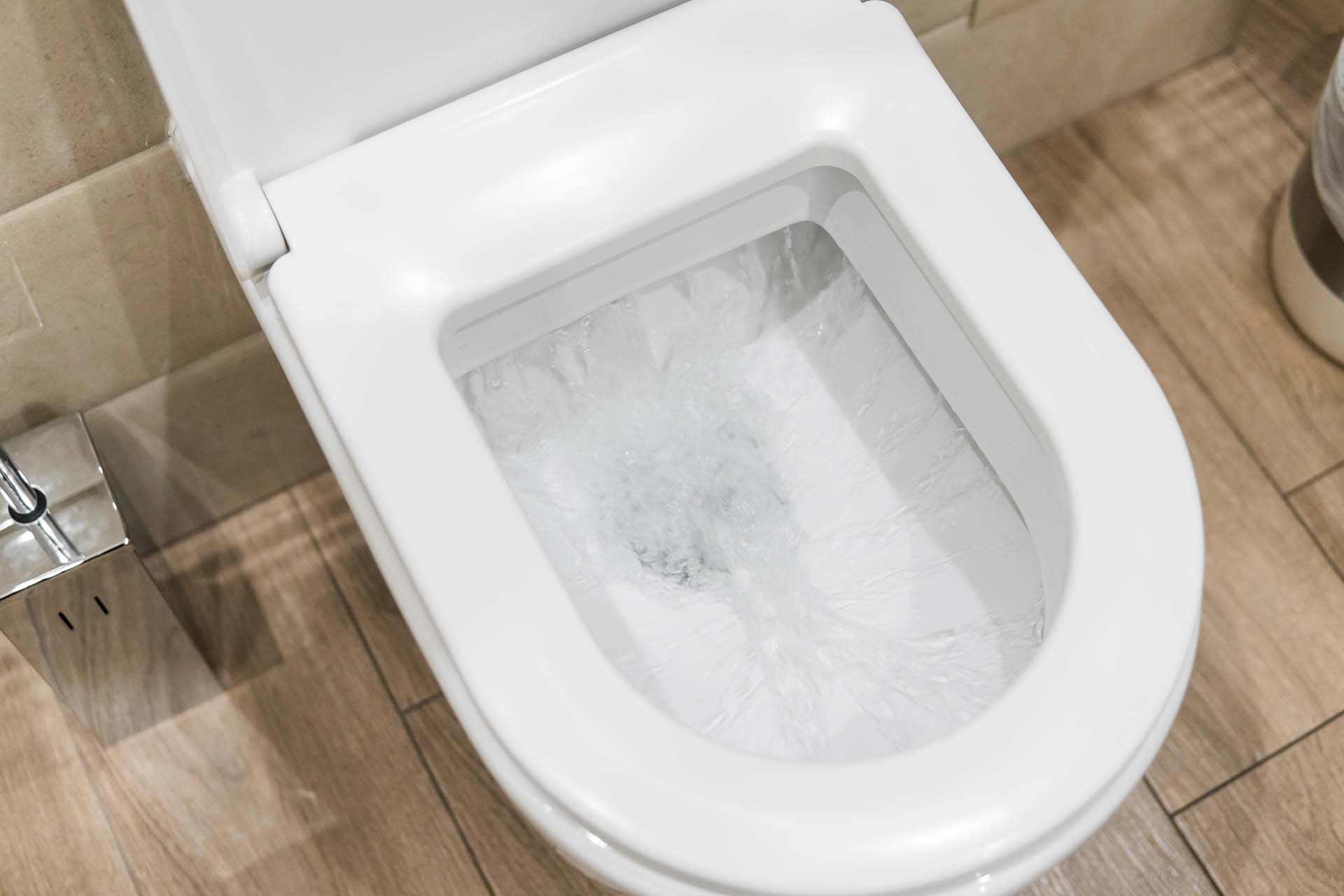
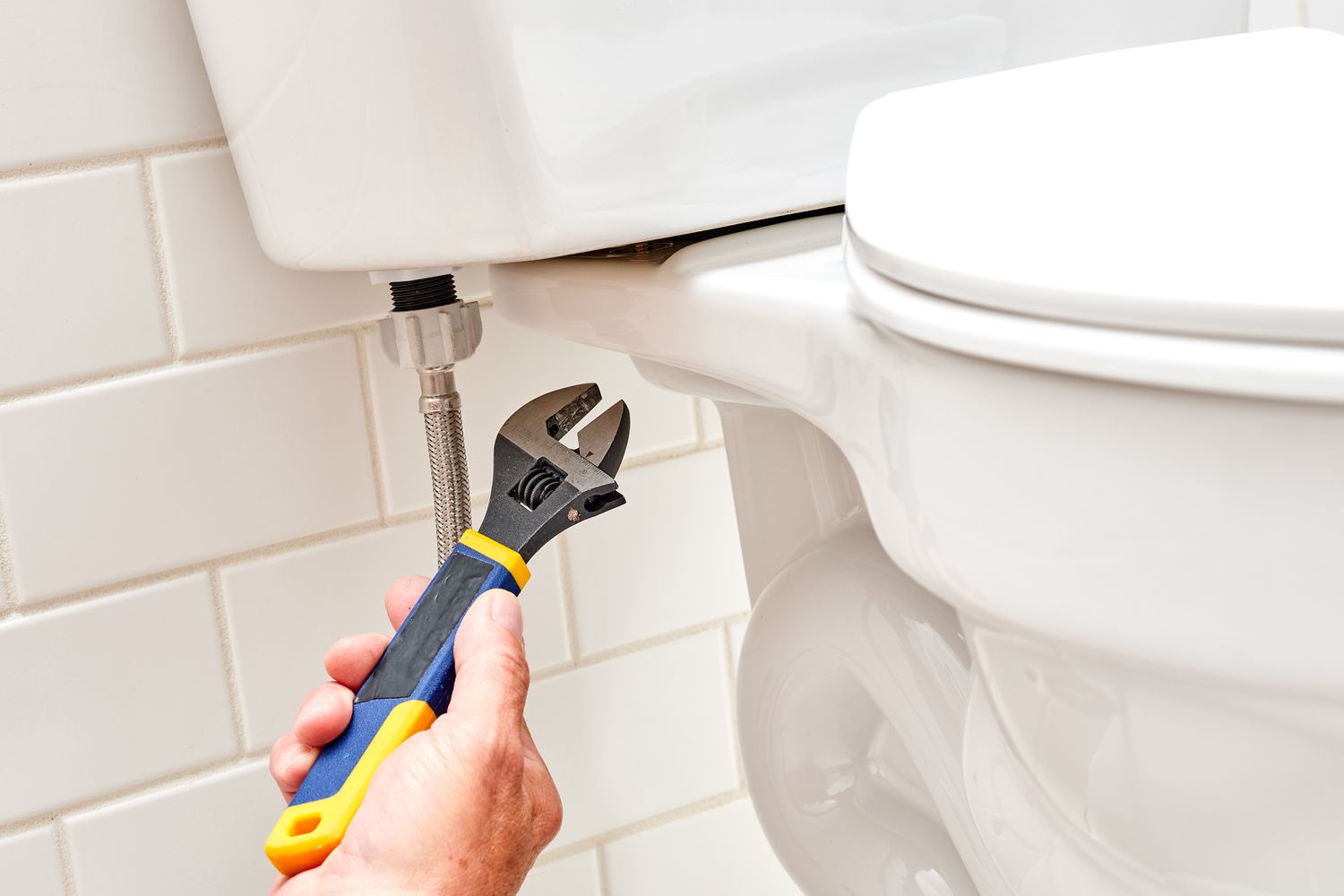

0 thoughts on “How To Fix My Toilet”